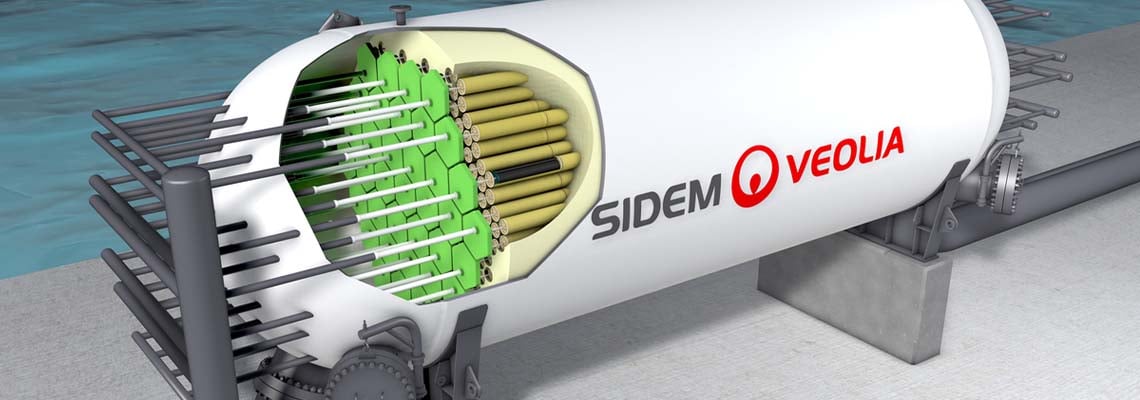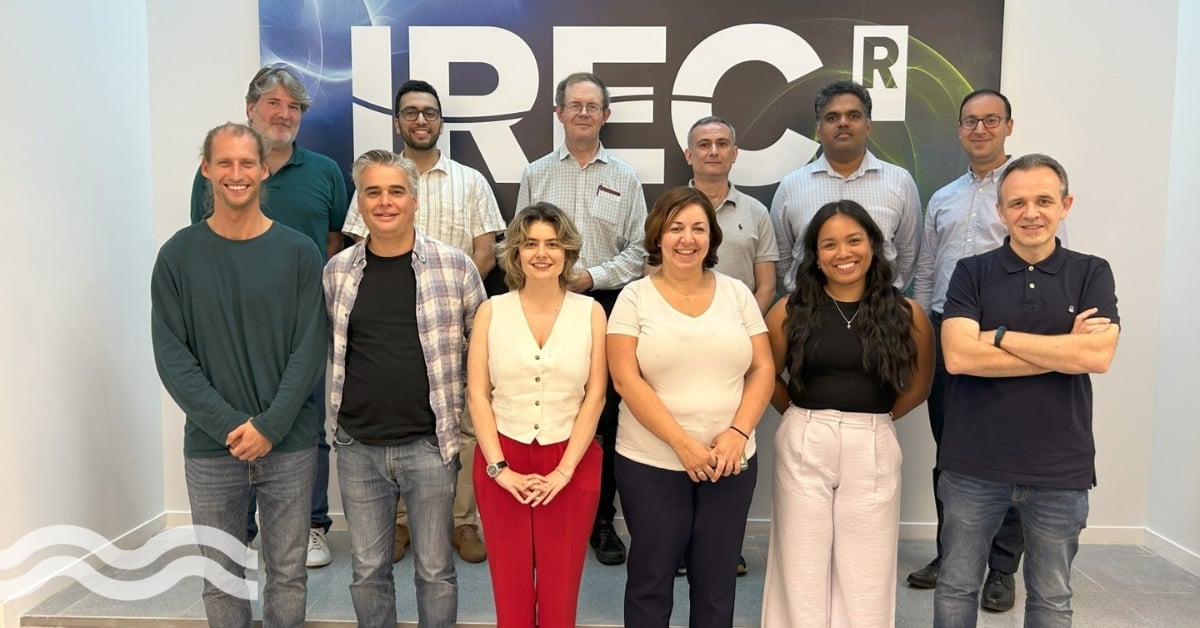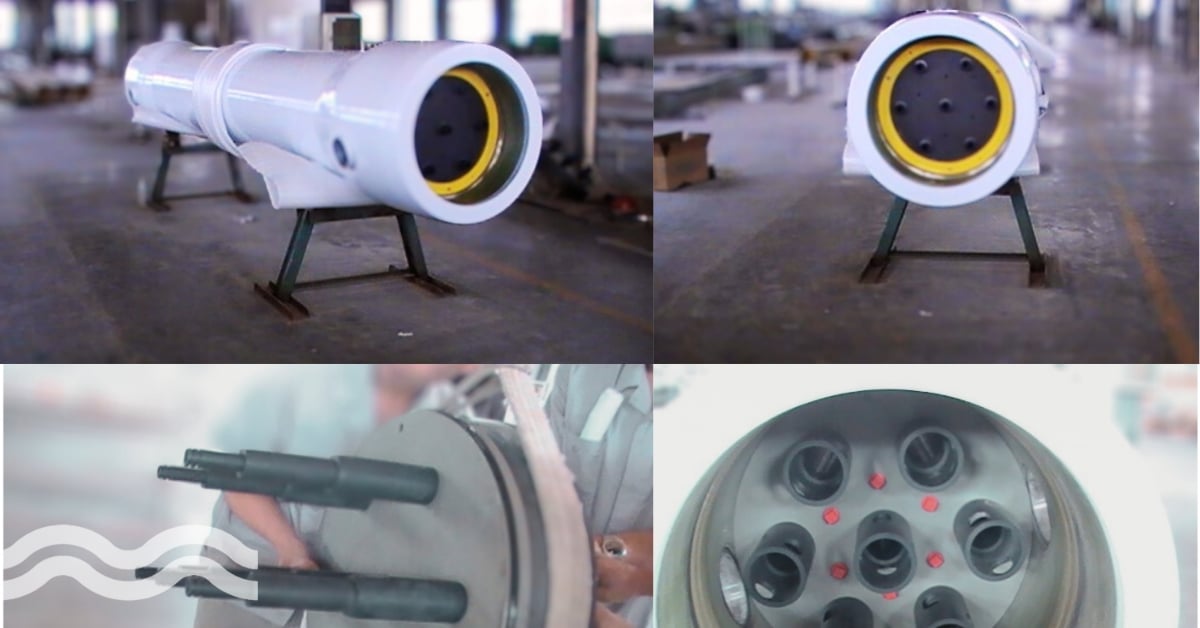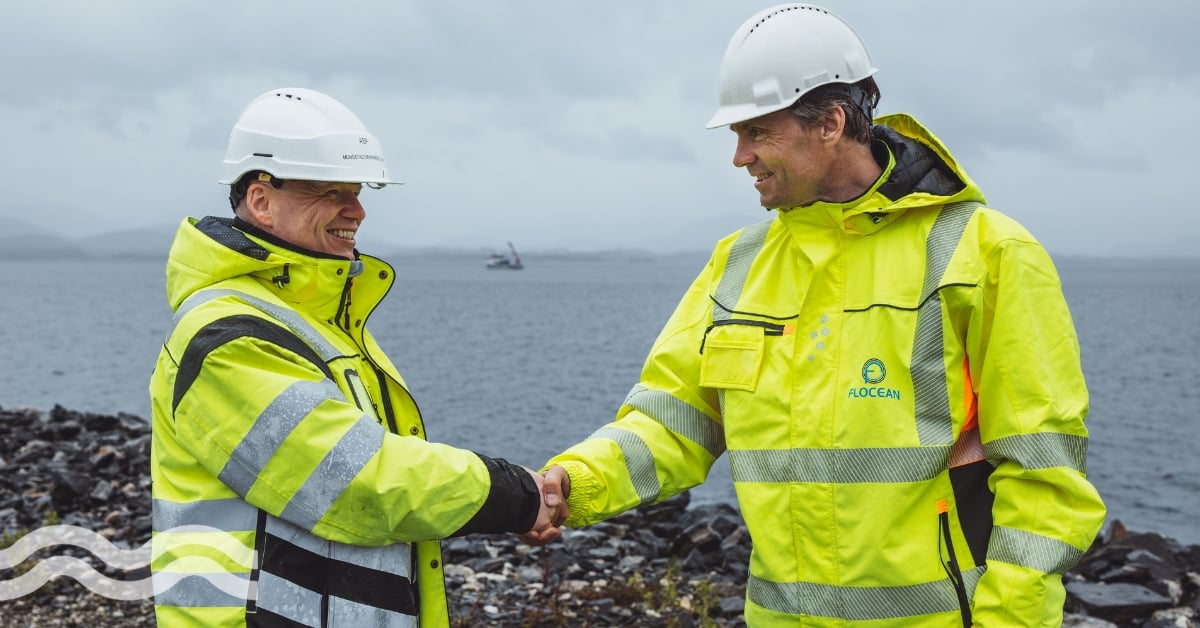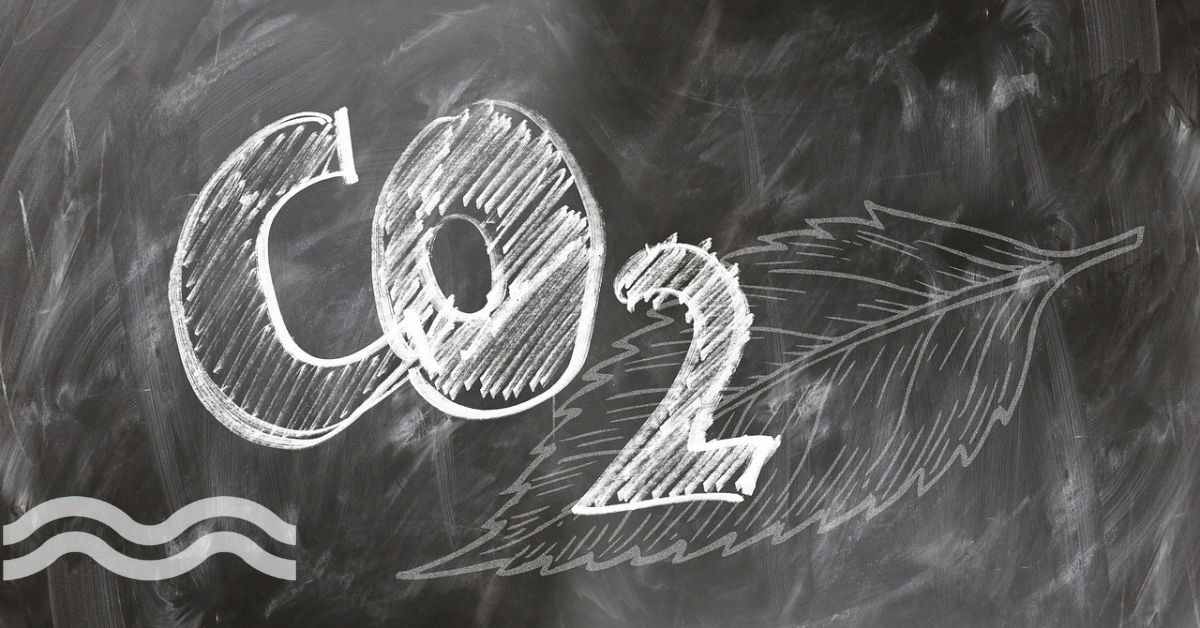Meet 'Barrel’ - the new face of digital desalination?
Optimising plant performance with data
A new modular technology combining multiple reverse osmosis (RO) membranes with digital sensors is hoping to shake up the desalination market.
Called the Barrel, the steel pressure vessel contains membrane elements which can be remotely monitored via a smart interconnector system.
Although a membrane-based solution, the installation of the Barrel is inspired by large evaporators of thermal desalination plants, according to Veolia Sidem, the company behind the development.
With the option for the Barrel to be built off-site and then delivered as a plug & play option, it’s hoped this will reduce capital costs, as well as offering a smaller footprint.
Currently in the demonstration phase, one small scale Barrel system including seven pressure vessels, has been in operation treating seawater from the Caribbean sea.
A second installation, at a slightly larger scale of 49 pressure vessels, is due to be installed at the company’s existing desalination plant in Oman Sur, 160km south-west of Muscat.
Smart connectors: Creating a digital barrel
The interconnector system includes electrodes that can provide real-time data on temperature and salinity.
Smart interconnectors are installed within the permeate tube, next to standard interconnectors, while loading the membranes. This gives a “permanent vision of the condition of each membrane” to help with diagnosis, operation recommendations, maintenance strategies and scheduling.
The concept is that based on this data, plant operators can optimise plant performance continually, leading to lower operation costs.
Veolia Sidem believes that by reducing the number of high-pressure connections, it will “drastically reduce” leakage sources found on the multiple high-pressure connections of traditional RO skids.
The company is packaging up the Barrel as a digital solution, which marries up with its Aquavista digital platform development.
So how will this work?
The interconnector devices can communicate with antennas moulded in the resin structure and provide the distributed control system (DCS) with local conductivity and temperature. A full mapping of the Barrel’s permeate network is available within a few minutes on the DCS, according to the company.
Operating temperature of the RO membranes is continuously monitored to ensure that the recommendations of membrane suppliers are met.
Commenting as part of a broader article on the IDA World Congress where the system was launched, Christopher Gasson, publisher of GWI, said the barrel development could “change the future of desalination”.
He said: “The concept was put together by a few old thermal desalters. Facing the choice of either becoming world-beating membrane specialists or being sent home to tinker with their kettles for the rest of their lives, they have come up with something quite brilliant….it is a challenge to every other player wishing to stay in the large plants market.”
Reduced flexibility
Dr Graeme Pearce, a membrane technology specialist with 30 years of experience in membranes, believes the upfront cost of the Barrel will be more but could be outweighed by design savings.
“The barrel vessel will be expensive, but there will be a saving on the number of vessels which will compensate,” he said. “The flexibility of the system will be much reduced, so it probably only makes sense for large or very large plants.”
Speaking to Aquatech Global Events, the principal at Membrane Consultancy Associates is also cautious of harsh operating conditions potentially affecting the technology.
“Avoiding the building would probably be a pipe dream,” he said. “This has been claimed before but never works out. The degradation of materials in the merciless heat and UV is highly damaging to all sorts of plastics. Seawater reverse osmosis (SWRO) plants in the Middle East deteriorate very rapidly in buildings, so this would be much worse with additional decay factors if outside.”
“In summary, it may be an interesting development, and could decrease cost in a highly competitive market so we should keep an eye on it. It is not obvious to me whether the benefits will pan out. Nice ideas potentially but do they give real savings and improvements?”
Dr Pearce concluded that the next stage is to see an “actual tender case study on comparative economics and then an operational case study to see whether the benefits are realisable”.
Responding to desalination market challenges and conditions
So have been the key drivers behind this development?
In its recent 'Wave' magazine, Veolia Water Technologies said the current desalination market “continues to display significant challenges”.
The full market price of desalinated water in the Middle East, including financing, energy and operation, has never been so low at 0.5 $/m3 of freshwater, Veolia said.
It added that number and size of new desalination projects put the equipment supply industry under enormous pressure to deliver within time and budget.
“The competition is as fierce as ever on this market,” said Vincent Baujat, managing director of SIDEM. “In these challenging market conditions, competing actors struggle to save resources necessary for research and development budgets on new technologies.”
Related content
Share your water technology stories with us
Do you have an innovation, research results or an other interesting topic you would like to share with the international water technology industry? The Aquatech website and social media channels are a great platform to showcase your stories!
Please contact our Sr Brand Marketing Manager Annelie Koomen.
Are you an Aquatech exhibitor?
Make sure you add your latest press releases to your Company Profile in the Exhibitor Portal for free exposure.
We promise never to send you spam and you can unsubscribe at any time!
